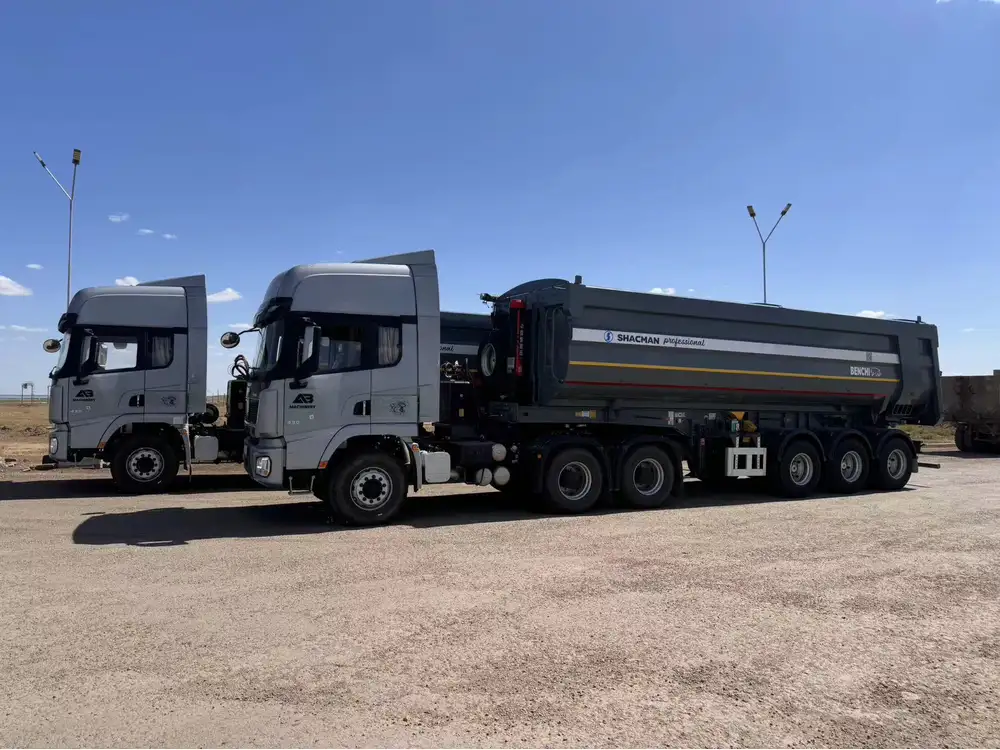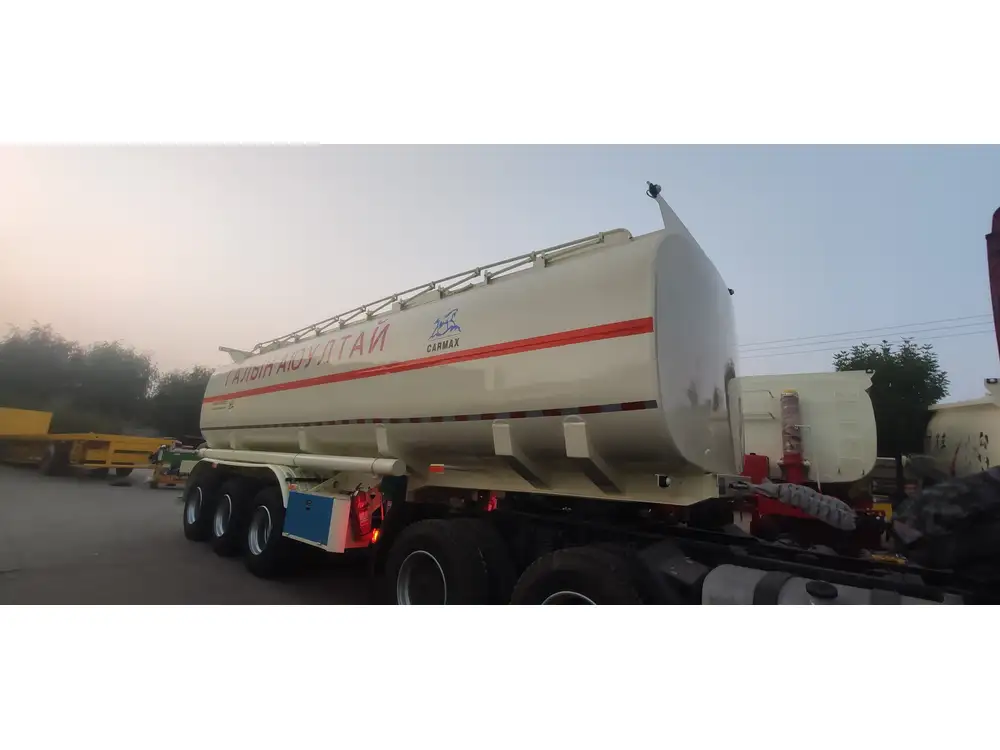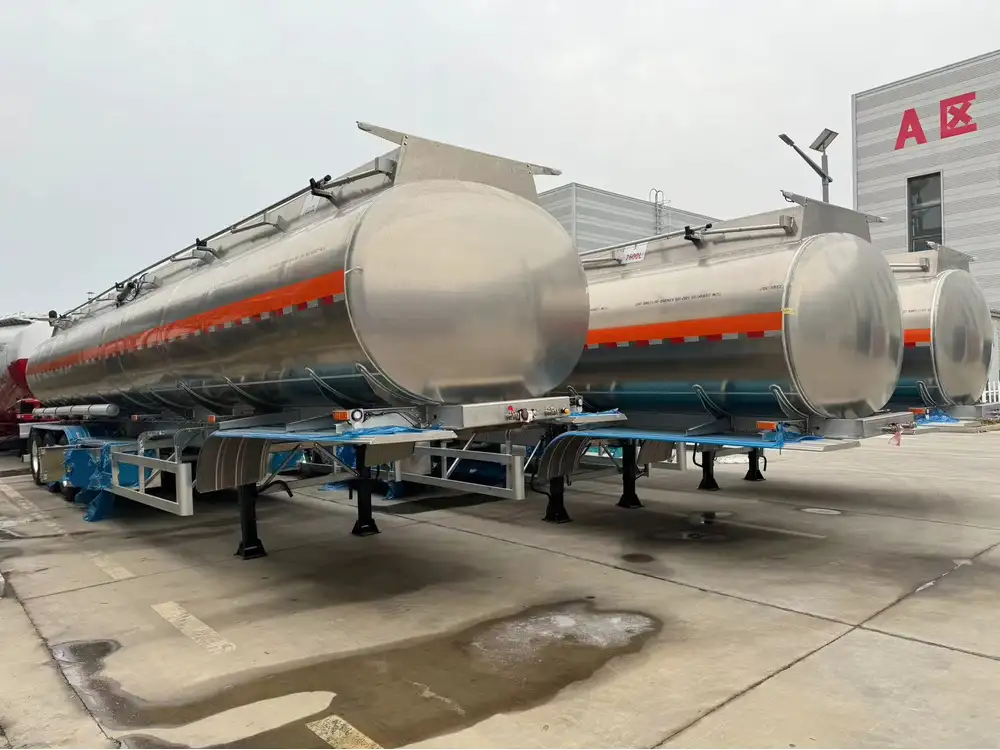When it comes to the transportation of liquids, bulk tanker trailers play a pivotal role in ensuring the efficient and safe movement of various materials, ranging from fuels to chemicals. However, navigating the regulations and registration requirements for these trailers can be complex. In this guide, we will delve into the intricacies of registration locations on bulk tanker trailers, providing you with essential information to streamline compliance and enhance operational efficiency.
What is a Bulk Tanker Trailer?
Bulk tanker trailers are specialized vehicles designed to transport bulk liquids such as fuels, solvents, chemicals, and food products. Their construction varies based on the nature of the substance being transported, and they often feature safety mechanisms to prevent leaks and spills. Understanding where the registration information is located is crucial for compliance with local, state, and federal regulations.
Key Areas for Registration Information on Bulk Tanker Trailers
Finding the registration information on a bulk tanker trailer is essential for ensuring compliance and operational legality. Below is a structured breakdown of where you can typically locate this vital information:

1. Manufacturer’s Plate
The manufacturer’s plate is often the primary source of information regarding registration. This plate typically includes vital details such as:
- VIN (Vehicle Identification Number): A unique identifier for the trailer.
- Model Number: Indicating the specific design and capacity.
- Gross Vehicle Weight Rating (GVWR): Maximum weight the trailer can transport, including cargo.
Location: The manufacturer’s plate is often located on the front bulkhead of the trailer, near the coupling area.
2. Tandem Axle Setup
On many bulk tanker trailers, particularly those used for heavier loads, the tandem axle setup may also house registration information. This is crucial for regulatory compliance related to weight load distribution and safety regulations.
Location: Inspect the axle assembly closely; the registration stickers or tags may be affixed to the axle beam or adjacent components.
3. Federal and State Registration Labels
Ensuring regulatory compliance requires attention to both federal and state regulations. Registration labels that affirm the trailer’s compliance with safety standards may be found:
Federal Compliance Label: This label indicates compliance with the Code of Federal Regulations (CFR), specifically Title 49.
State Registration Label: Many states require an additional registration sticker which must be updated yearly.
Location: These labels are often located on the rear or side of the trailer, easily visible from the outside.

4. Inspection and Certification Stickers
Beyond general registration, bulk tanker trailers often display several inspection and certification stickers. These stamps may include:
- DOT Inspection Certification: Verifying the trailer’s roadworthiness for federal transportation.
- Environmental Compliance Stickers: Necessary for trailers transporting hazardous materials.
Location: Generally found on the interior sidewalls or the rear of the tanker trailer.
Navigating Local Regulations
Each state has its own regulations regarding the registration of bulk tanker trailers. It’s imperative to familiarize yourself with local laws. Here is a concise table summarizing typical aspects of state regulations across the United States:
| State | Registration Renewals | Inspection Frequency | Special License Required |
|---|---|---|---|
| California | Yearly | Annual | Yes (Hazmat) |
| Texas | Biennial | Annual | No |
| Florida | Yearly | Biennial | Yes (for hazardous materials) |
| New York | Yearly | Annual | Yes (if transporting fuel) |
| Illinois | Biennial | Annual | No |
Frequently Overlooked Registration Aspects
In addition to the main registration locations outlined, several aspects are often overlooked, yet they are imperative for maintaining compliance and ensuring smooth operations:

1. Periodic Inspections and Updates
Failing to keep registration up-to-date can lead to fines, legal trouble, and loss of operational permits. Annual inspections are often required to maintain compliance.
2. Liability and Insurance Considerations
Certain insurance policies mandate that registration information is presented to maintain liability coverage. Ensure you keep copies of all registrations in an accessible manner for both audits and insurance claims.
3. Training for Operators
Trained personnel should be aware of where registration and compliance labels are located. Ongoing training regarding legal requirements can reduce the chances of accidental non-compliance.

4. Digital Record-Keeping
In the age of digital records, it’s prudent to maintain an electronic file of all registration documents and labels. This can foster efficiency when presenting documentation for audits or inspections.
Importance of Compliance with Registration
Ensuring your bulk tanker trailer is properly registered is not just a bureaucratic exercise but serves to uphold safety protocols, guarantee legal operation, and promote environmental protection. Non-compliance can result in significant fines, damage to reputation, and operational downtime.
Conclusion
Understanding where the registration is located on bulk tanker trailers is crucial for compliance, safety, and operational efficiency. From the manufacturer’s plate to federal and state compliance labels, knowing where to look and what to look for can save time and hassle.
Regular inspections, proper operator training, and maintaining a digital record of all registration documents will keep your operations running smoothly. By prioritizing registration awareness, you can enhance your operations’ efficiency and regulatory compliance—a pivotal aspect in the bulk liquid transport industry.
By adhering to these guidelines and being proactive in understanding the registration landscape for bulk tanker trailers, you will ensure not just legal compliance but also contribute to a safer, more efficient transportation network.



